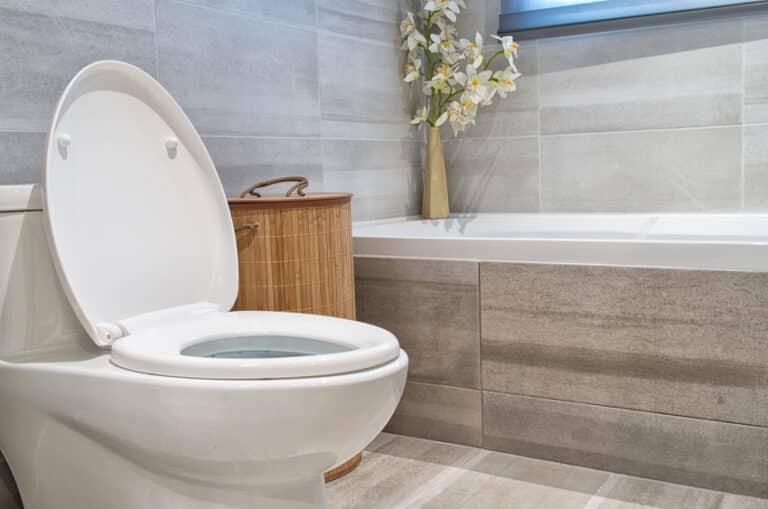Stacked Stone Shower Walls (Materials & Installation Tips)
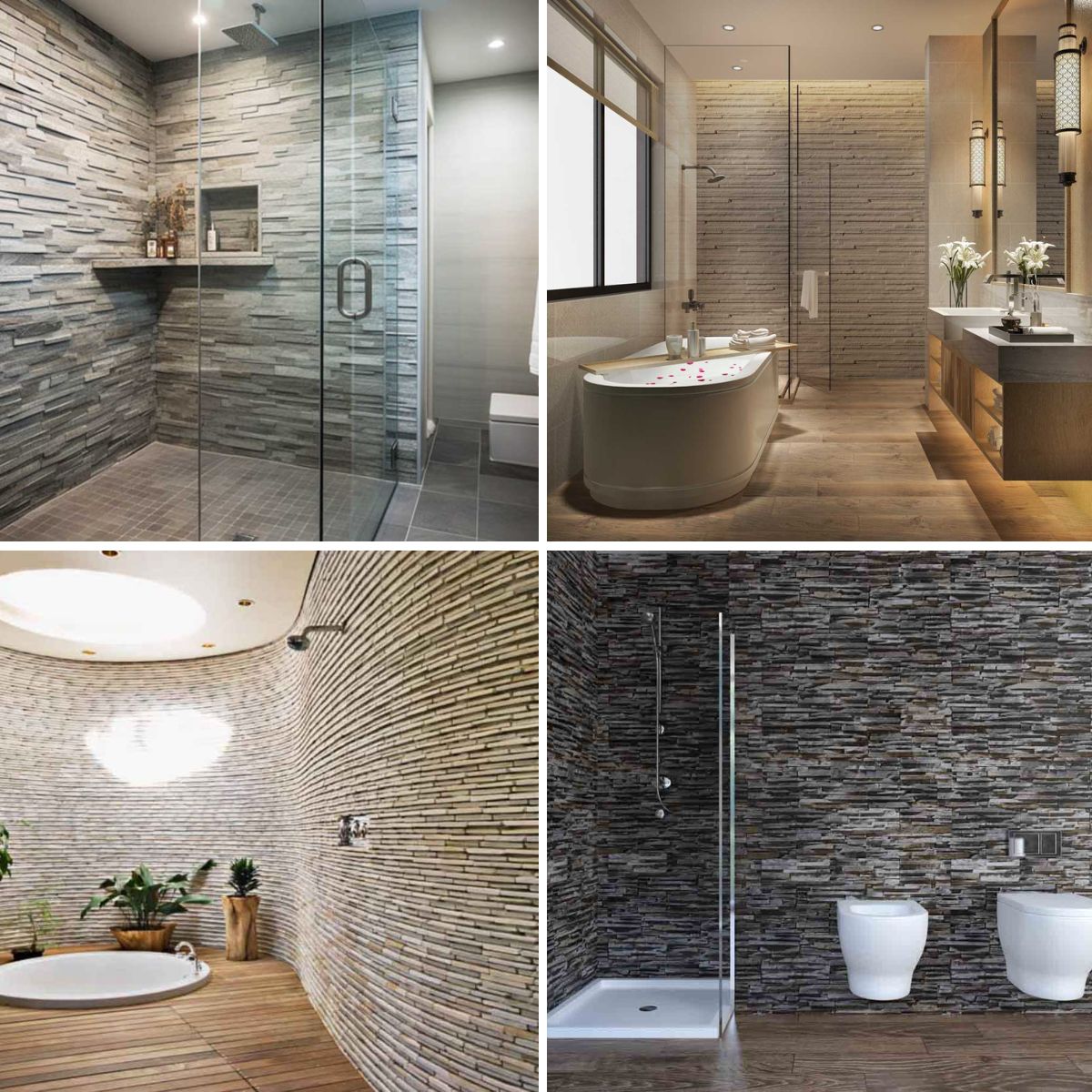
Bringing natural elements into your bathroom, such as stacked stone shower walls, is the perfect backdrop for your personal retreat. Relaxing and inviting, the textured surface contrasts beautifully with the sleek surfaces of your usual glass and metal materials.
The spa-like spaces have set the tone for designing residential bathrooms. Adding organic elements can make a difference in the ambiance, no matter how small or large your bathroom is. But are stacked stone shower walls a good idea in a bathroom space?
Can You Use Layered Stone in the Shower?
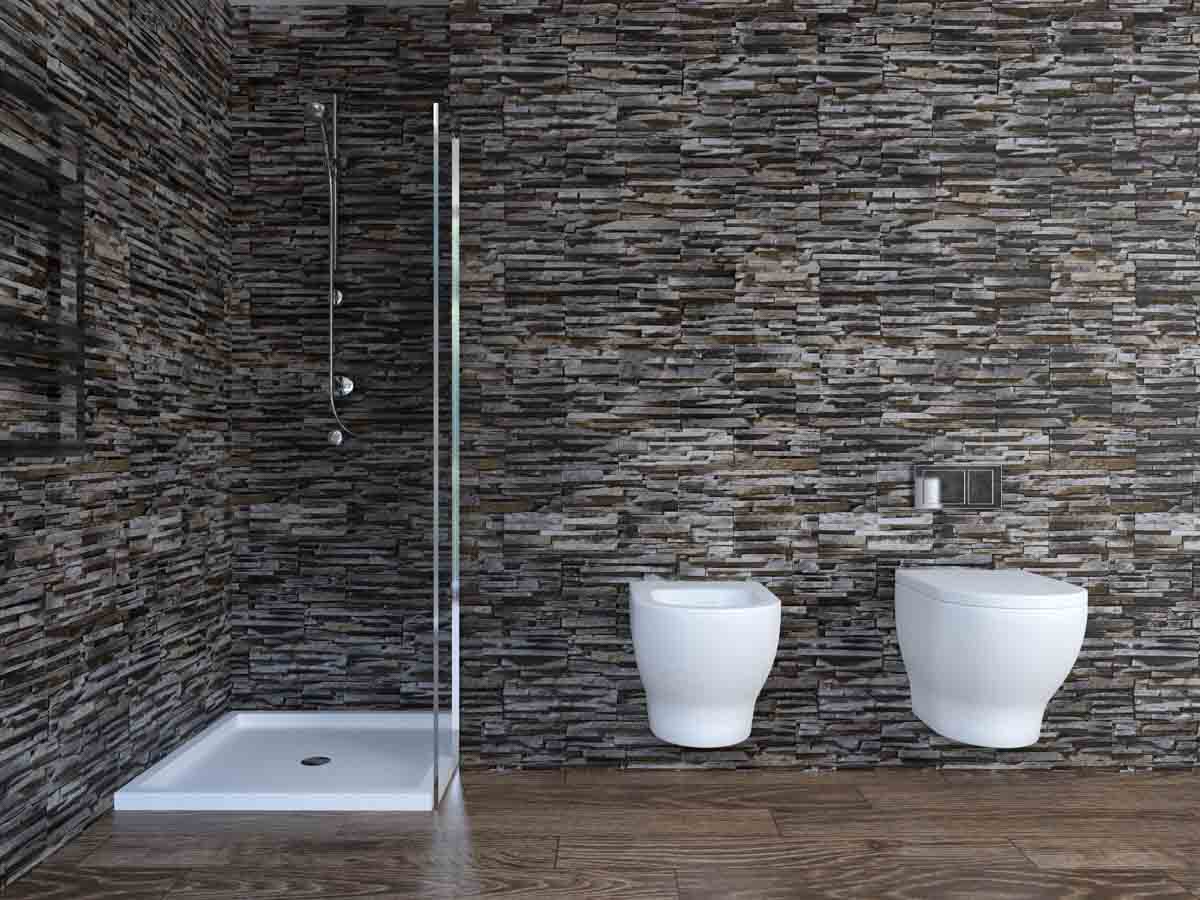
Stacked stone can be used in shower walls with the proper substrate installed, together with a waterproof sealant that will keep off moisture or water from seeping through. The substrate should be strong enough to hold up the additional weight of the stacked stones.
Stone veneer tiles come in different sizes and shapes, including square, rectangular, and sometimes irregular shapes, to resemble the appearance of natural stone pieces.
The tactile surface of natural stone and crevices between each stone can easily trap water, moisture, or gunk. Mold and mildew can easily spread in a damp environment producing spores and other allergens that can cause serious health issues.
When choosing to go for a stacked stone shower wall, consider the commitment to periodically resealing your bathroom wall. Jacqueline Tabbah, vice president of International Stoneworks in Houston, Texas, advises resealing stacked stone walls once a year.
A convenient way to add a natural look is by using stacked stone tile or stone veneer wall panels. Stacked stone tiles with their modular system make installation faster and easier.
Choosing the right type of stone is also essential. Specify stone materials that are suitable for wet areas and will not be adversely affected by moisture. Natural stones like slate, marble, quartzite, and manufactured stone designed for wet environments are good options.
Stacked stone installation can be more complex than traditional tiles due to the irregular shapes of the stones. It is advisable to have a professional experienced in working with a stacked stone handle on the installation to ensure a proper fit and a secure bond.
Stack Stone Tile
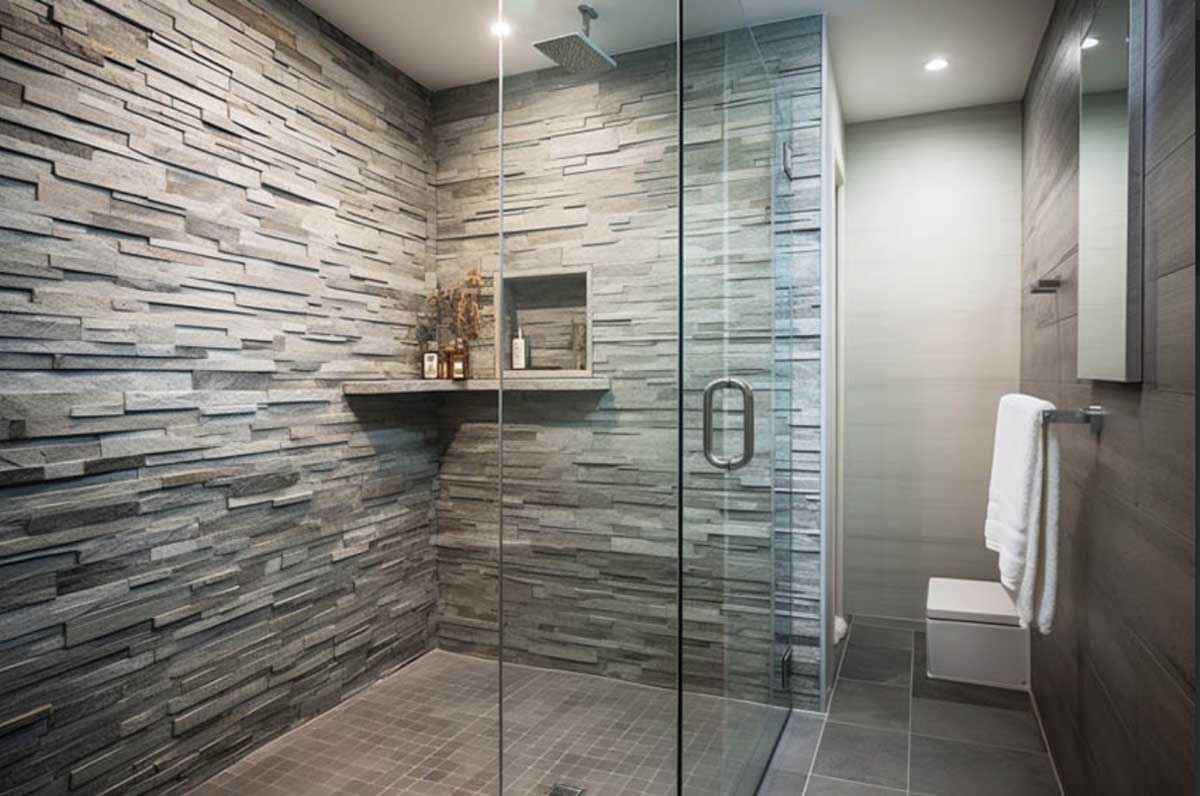
Stack stone tiles are a type of wall cladding material made from natural or engineered stone. Like the typical ceramic or porcelain tiles, stack stone tiles are modular with uniform sizes. The most popular design for stone stack tiles comes as ledger pieces measuring from 4 to 12 inches in length and 2 to 6 inches in height. The thickness can range from .5 to 1 inch or 1.3 to 2.5 cm.
Large pieces are also available ranging from 12 to 24 inches, with a height of 6 to 12 inches, and can be as thick as 1.5 inches or 3.8 cm. Square or puzzle size options similar to the typical tiles are available as well, such as 40 x 40 cm, 45 x 45 cm, and 60 x 60 cm. A stone stack tile will have several pieces of stones fit together and be held by a mesh backing.
Other terms used to refer to stack stone tiles are stacked stone veneer or stacked stone panels. These are decorative tiles that mimic the look of natural stone.
Aesthetically, stacked stone can be used in a shower to create a stunning and natural-looking design. Stacked stone is a popular choice for shower installations because it adds texture, character, and a sense of the outdoors to the space. However, there are some important considerations and steps to take to ensure a successful and long-lasting stacked stone shower.
Stone Veneer Wall Panels
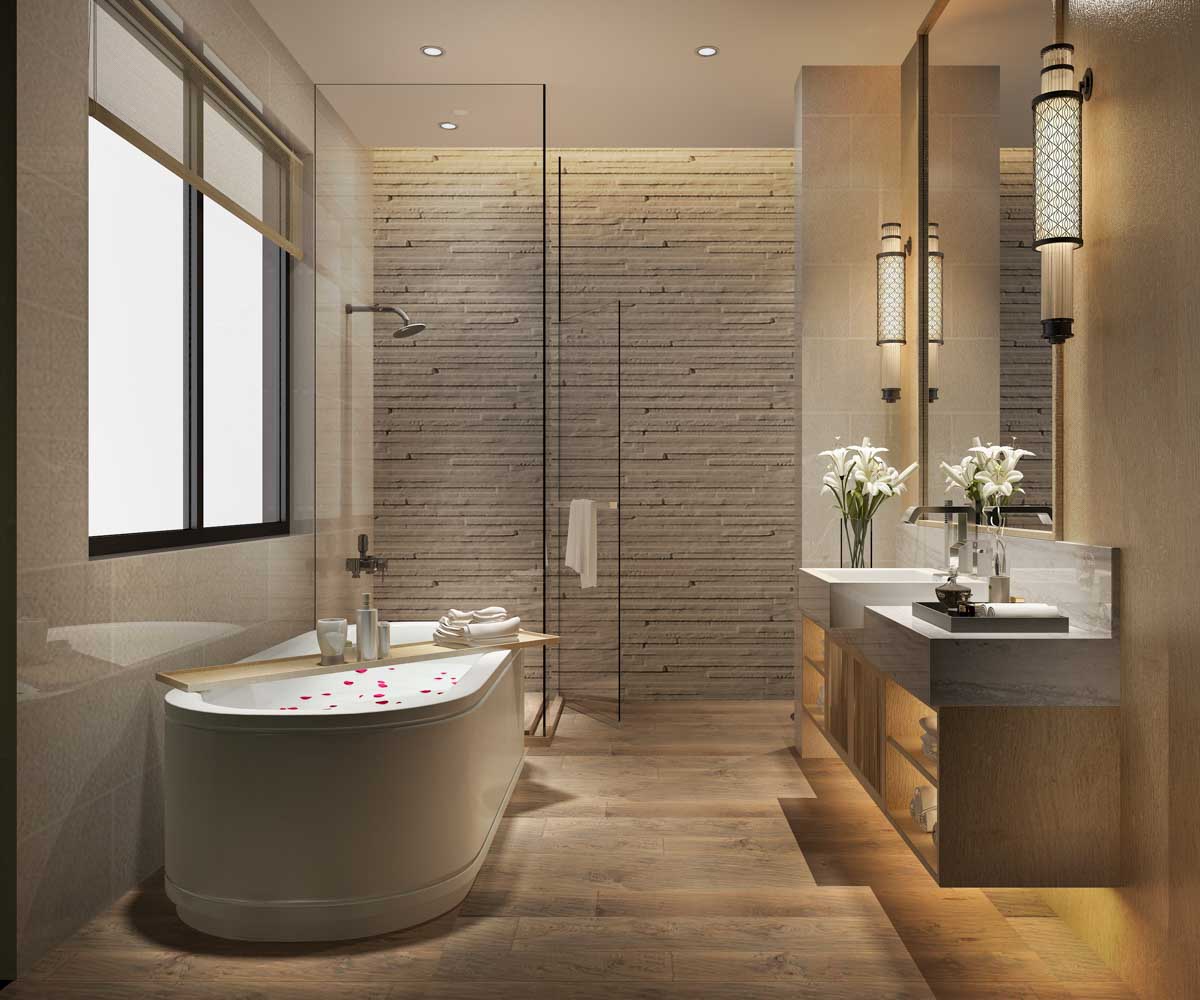
Larger than stacked stone tiles, stone veneer wall panels are faux stone veneers that are usually made from high-density polyurethane. There are also veneer panels made from molded concrete with fiberboard backing.
The molded concrete panels are typically hand-painted to provide a realistic look. Stone veneer wall panels can be made from real stone, but due to the weight, it can be more challenging to install.
These faux stone panels simulate the look of true stone, including the color and texture. Due to its lightweight material, the panels can be installed as a DIY project using typical hand tools and can be done by a single person. It also covers a larger area making it great for expansive walls.
Similar to the ledger stone tiles, each panel has interlocking sides and can be easily cut with a hand saw to fit corners. When cutting, lay out a wood ply on the cutting table and place the stone veneer wall panel with the front surface facing the wood ply. This gives distributed support along the panels.
Standard Panel Size:
Height: 24 inches (61 cm) inches
Width: 6 to 8 inches (15 to 20 cm) inches
Corner Panel Size:
Corner panels are used to create a seamless look when transitioning from one wall to another or when wrapping around corners. These panels typically have a height and width that matches the standard panels but are designed with a mitered edge to form a 90-degree angle.
Stone Veneer Panels:
Height: 48 inches (122 cm) inches
Width: 12 inches (30 cm) inches
Some manufacturers also offer the option to create custom-sized stone veneer wall panels to fit specific project requirements. This provides greater flexibility in design and installation.
How Do You Prepare a Wall for Stone?

Check if the wall can support the stacked stone: For stacked stone walls made of real stone, check if the wall is able to support the weight of the stacked stone. Concrete or brick and most load-bearing walls are able to support the added weight.
Inspect the wall for any type of damage: If there are issues, address these before proceeding with the installation. Small holes or hairline cracks can be easily patched up using putty and other similar or cement fillers. But if persistent water or moisture is coming from the damaged areas, there will be a need to apply elastomeric crack filler on both the interior and exterior of the wall.
Check for unevenness in the surface: The surface levelness of a wall is not only important when installing wall cladding. For instance, certain paint colors can show wall depression or bumps under certain lighting. The quickest and more accurate method of checking unevenness in a wall surface is using a surface-level laser.
Clean the wall: Using a mild detergent or water, scrub off debris or grease from the wall surface. Then, allow it to dry. Again, check for any damages before proceeding with the stacked stone installation.
Bathroom Installation
• Use initial steps when installing in a bathroom.
• For wood framings, use an antimicrobial cement board to cover the framing.
• Place a waterproofing sheet or apply a fluid membrane overlapping the shower pan. The added layer of protection will protect the wall cavity if water or moisture might see through the stone.
• Use a thinset with antimicrobial properties. The thin set can be applied both on the stacked stone backing and the wall. The polymer-modified thin-set will discourage mold and mildew growth.
Do You Need a Backer Board for Stone Application?
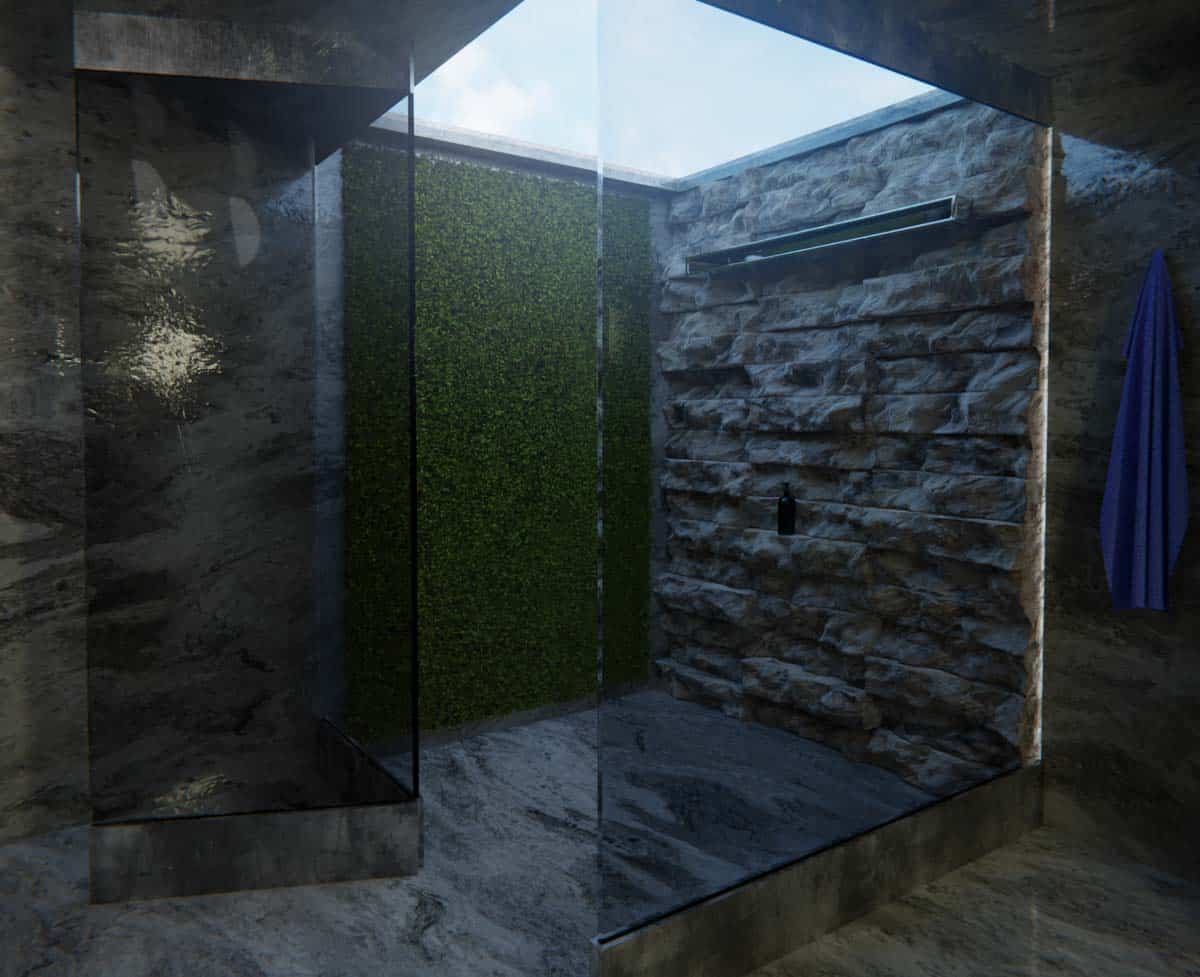
A backer board for stacked stone installation is needed to help support the additional weight of tiles or panels, particularly for natural, cement, and other heavy types of stacked stone tiles.
However, stacked stones that are made from polyurethane and other lightweight materials can be installed directly on drywall. Natural or faux stacked stone can be installed directly on brick or concrete walls, given that the walls are load-bearing. However, you’ll need to remove imperfections and have the wall even out by applying a skimcoat or mortar on the surface to level the plane.
Backer boards such as cement boards or fiber cement boards also act as a barrier against water seepage. The drywall is not meant to carry the load and can crack easily without proper support.
Slim panels that are usually ½ inch to 1 inch thick can also be laid directly over wall surfaces that are not exposed to moisture and water.
For bathrooms, a backing board is a must before laying out the stacked stone to protect the substrate from damage from water or moisture seeping through.
The recommended thickness for the backer board is 1/2 inch (12mmm) minimum or 5/8 inch (15mm). Fiber cement board and cement board are commonly used as veneer backer boards, but cement board costs less than fiber cement board. These boards have a standard size of 3 feet x 5 feet and can be easily cut by circular saw or jigsaw.
For heavily stacked stone installations, consider building a support frame on the wall. This frame would be attached to the wall studs and act as a sturdy base for the stacked stone.
Can Drywall Support Stacked Natural Stone?
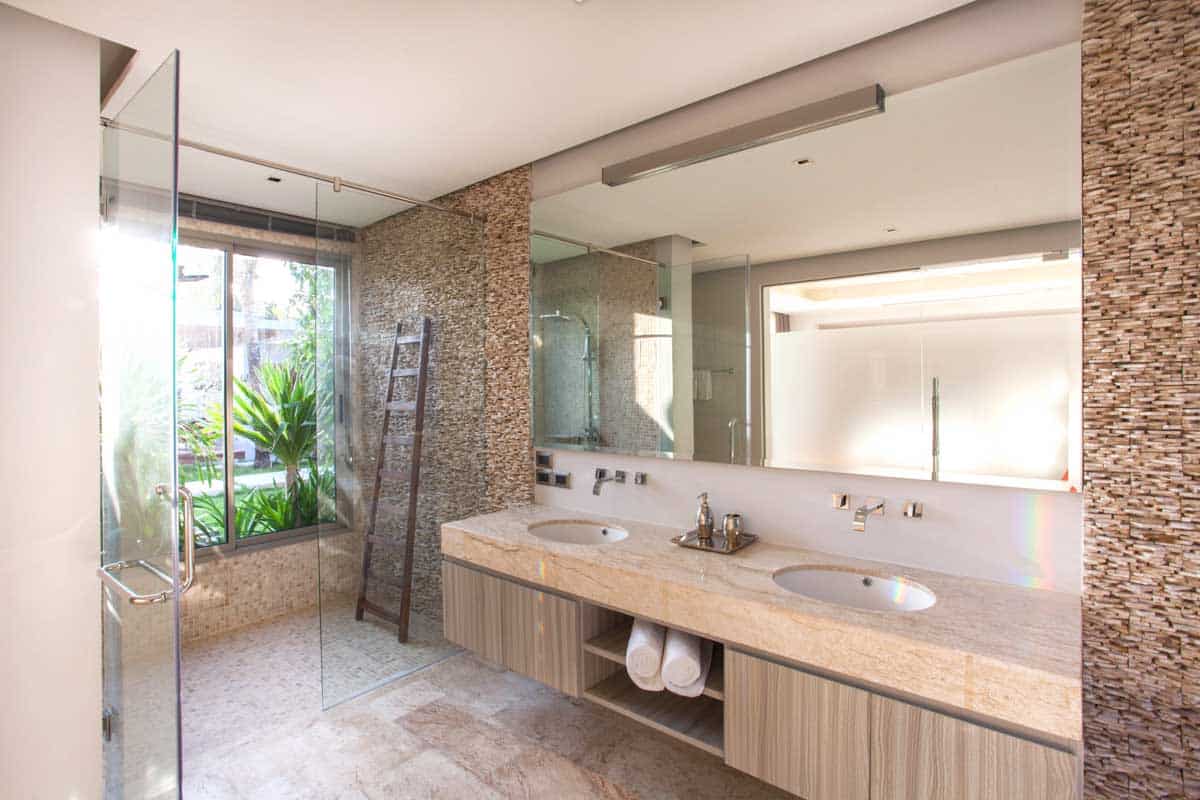
Two factors are considered to determine if drywall is able to support a stacked stone. First is the weight of the stacked stone. As mentioned previously, natural stone and concrete cladding are heavy, and most types of drywall are not intended as a load-bearing material.
The weight per square foot will depend on the type of rock. Concrete stone cladding is relatively lighter than most types of stacked stone, but granite will be significantly heavier than concrete.
Drywall is one of the easiest building materials to install, partly because it allows so much margin for error. – Finishing Walls & Ceilings, Phil Schmidt Creative Publishing international
The second factor to consider to determine if drywall can support stacked stone is the condition of the drywall. If it is in good condition, proper mounting hardware can be used. But drywall is still not as structurally sound as concrete or masonry.
Added support, like anchoring directly to the wall studs or replacing drywall with stronger boards, can ensure the longevity and safety of a stacked stone installation.
Tip: Distribute the Weight of the stacked stones evenly. Make sure that the weight is distributed evenly across the wall. Avoid concentrating the weight in one area to prevent stress on the drywall.
Only use high-quality construction adhesives that are made for stone or masonry installations to bond the stacked stone to the backer board. Additionally, you can use mechanical fasteners, such as screws or nails, to secure the stacked stone in place while the adhesive sets.
It is best to contact a certified installer or a professional contractor when planning to install a stacked stone wall to help assess the structural integrity of your wall. Also, check for local building codes regarding stone veneer requirements.
How Do You Waterproof Stacked Laid Stone?
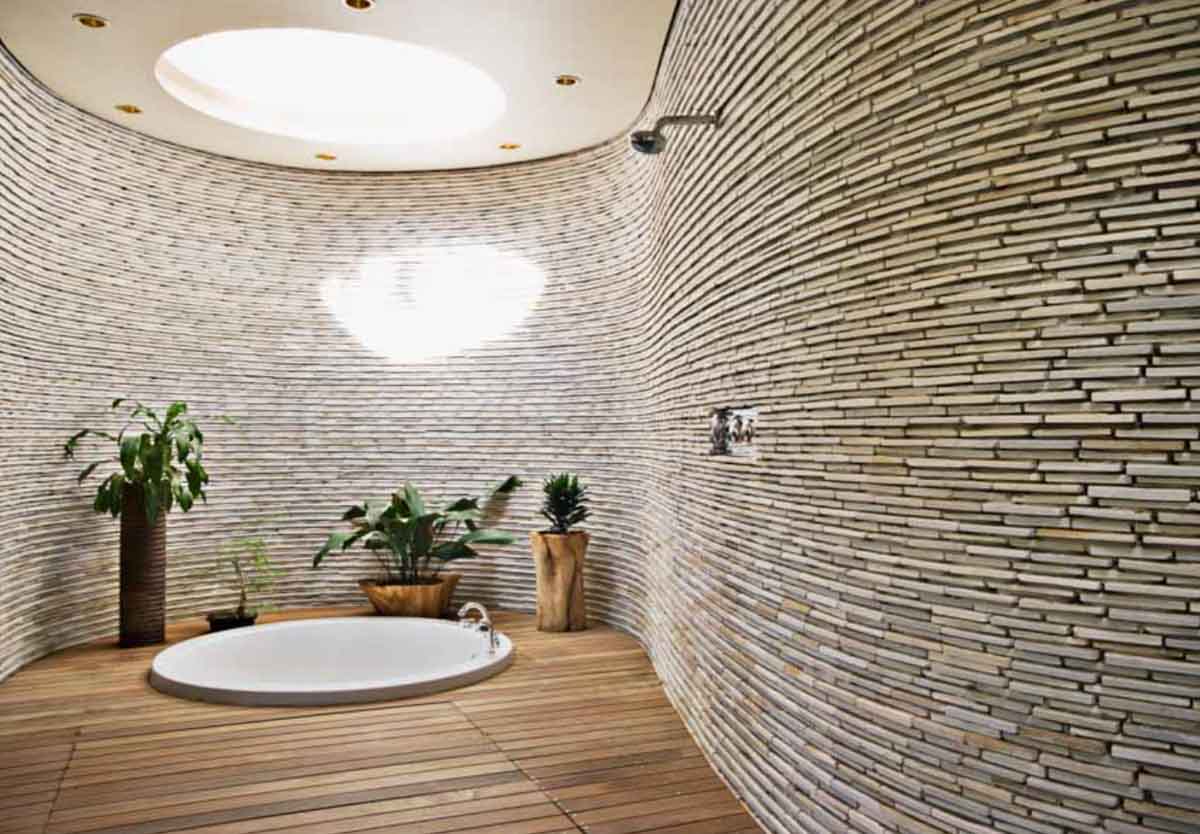
Apply Stone Sealant: Before installation, apply a stone sealer to each individual piece of stacked stone. Stone sealers are designed to penetrate the pores of the stone, creating a protective barrier against water and gunk from soap or detergents. Follow the manufacturer’s recommendation or application and drying time.
Waterproofing Membrane: When installed in a shower, a waterproofing membrane laid over the surface before placement creates an impermeable surface to stop water from seeping further into the substrate.
A variation of waterproofing membranes is the anti-fracture membrane. This protective layer is needed to prevent problems with the stone cladding during the winter season. A waterproof membrane is required, especially in an outdoor shower.
Also termed a crack isolation membrane or uncoupling membrane, it is a specialized product used in tile installations to prevent cracks in the substrate from transferring to the tile surface. It is typically installed between the substrate and the tile to protect the tiles and grout from the movement and stresses that can occur on the underlying surface.
Use Waterproof Grout: When filling the gaps between the stacked stones, use a waterproof grout specifically designed for natural stone installations. Waterproof grout prevents water from seeping through the joints.
Proper Installation: Ensure that the stacked stone is installed with proper drainage in mind. Properly sloping the installation surface away from the wall and providing adequate drainage channels will help prevent water from pooling behind the stone.
Caulking: In areas where the stacked stone meets other materials, such as windows or doors, use waterproof caulk to seal any gaps and prevent water infiltration. Use silicone and silicone-blend caulks that prevent mold and mildew from forming.
Regular Maintenance: Even with waterproofing measures in place, it’s essential to perform regular maintenance to keep the stacked stone in good condition. Inspect the stone and grout periodically and reapply sealers as needed.
Apply neutral stone cleaner for naturally stacked stone on shower walls to prevent soap and other types of dirt from accumulating in crevices or fissures. But be sure to check the stacked stone manufacturer’s recommendations for cleaning.
See more related content in our article about vinyl shower walls on this page.






